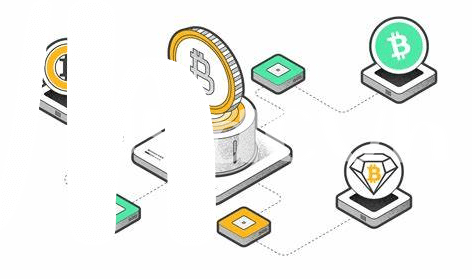🌱 the Dawn of Bitcoin: a Digital Revolution

Back in 2008, when the world was hit by a financial crisis, something revolutionary was quietly brewing in the tech world. A person or group known only as Satoshi Nakamoto introduced us to Bitcoin, a whole new type of money designed for the internet age. It was digital, decentralized, and promised to change how we thought about finance. Unlike traditional money, Bitcoin wasn’t controlled by banks or governments. Instead, it relied on a network of computers, solving complex puzzles to process transactions and create new Bitcoins. This was a big deal because it offered a way to make transactions without middlemen, directly from person to person. Think of Bitcoin as digital gold that you can send over the internet. Its debut marked the start of a big adventure, not just for tech enthusiasts but for anyone curious about the future of money. With Bitcoin, the idea wasn’t just about creating digital cash. It was about challenging the very fabric of global finance, making payments faster, more secure, and accessible to everyone, everywhere. Below is a simple table highlighting the key features that set Bitcoin apart early on:
| Feature | Description |
|---|---|
| Decentralized | No central control; managed by a peer-to-peer network |
| Digital only | Exists purely in digital form, ideal for the digital era |
| Limit on quantity | Only 21 million Bitcoins to ever be created, preserving value |
| Secure | Uses cryptography for secure transactions |
| Global | Can be used anywhere with internet, transcending borders |
This innovation wasn’t just a new kind of money; it was a spark that ignited a digital revolution, fundamentally changing how we think about financial transactions in the digital age.
🍴 Understanding Forks: the Path to Diversity
In the vast and sparkling ocean of the digital revolution, think of Bitcoin as the pioneering ship. But even pioneers encounter crossroads, or in Bitcoin’s world, “forks.” These forks are not your ordinary kitchen utensils but crucial turning points that give birth to new paths, offering diversity and choice in the cryptocurrency ecosystem. They’re like the crossroads of destiny for Bitcoin, leading to different versions of itself, each adapted to meet specific community needs or technological upgrades. This diversity isn’t just about having options; it’s about strengthening the entire network by embracing change and innovation.
One could compare these forks to branches growing from a mighty tree, each taking its unique direction towards the sun, yet rooted in the same ground. They illustrate the dynamic and adaptable nature of Bitcoin, showing that it’s not just a static digital asset but a thriving ecosystem capable of evolution and growth. For those eager to dive deeper into the intricacies of Bitcoin and how it protects against worldwide inflation or to enhance their knowledge through hands-on learning, the perfect starting point can be found here. This gateway opens up a treasure trove of insights, ensuring that every enthusiast is well-equipped for the journey ahead in the ever-evolving crypto landscape.
🔍 Bitcoin Cash Vs. Bitcoin: a Major Split

Imagine a big family, where one day, a disagreement led to two branches going their separate ways. This is similar to what happened in the world of Bitcoin in 2017, marking one of its most significant moments. The disagreement was about how to make Bitcoin transactions faster and cheaper. One group believed in changing the original recipe, while another wanted to increase the size of transaction “plates” to serve more at once. This difference in vision gave birth to Bitcoin Cash, a new member in the digital currency family, stepping out with a promise to handle more transactions at a faster pace compared to its predecessor.
This split was like opening a new chapter in Bitcoin’s journey, sparking a lot of chatter and excitement. It wasn’t just about who was right or wrong; it was about showing the world that Bitcoin could evolve and adapt. Bitcoin Cash aimed to stick closer to the original idea of being a digital cash system, making it easier for everyday use. Meanwhile, Bitcoin continued its path, focusing on being more of a digital gold, a valuable asset to hold onto. This divergence not only expanded the family tree but also opened the doors to fresh debates and innovations, shaping the future of digital currencies.
⚡ Lightning Network: Bitcoin’s Speedy Evolution

Imagine finding a way to make Bitcoin transactions zippier, akin to shooting emails in the blink of an eye. That’s the magic behind a significant upgrade that revolutionized Bitcoin’s journey towards becoming more user-friendly. This advancement didn’t just enhance transaction speeds; it opened up new avenues for micro-transactions, making buying a coffee with Bitcoin no longer a daydream. What’s captivating is how this breakthrough mirrors the evolution of technology at large, always moving towards making our digital lives smoother and more efficient. Amidst evolving technology, keeping an eye on how economic shifts influence digital currencies becomes crucial. For insights into the intricate dance between bitcoin and inflation suggestions, exploring current trends can offer a glimpse into the future of financial transactions and digital currencies’ resilience against global shifts. This journey isn’t just about speed; it’s about adapting to our changing world, making Bitcoin not just faster, but smarter.
🔖 Segwit: a Milestone in Bitcoin’s Story
Imagine a bustling city where the roads are always packed, slowing everyone down. Then, someone comes along with a brilliant plan to create special lanes just for bikes, easing the traffic for everyone. That’s pretty much what SegWit did for Bitcoin. Introduced in 2017, it was a game-changer. Before SegWit, every Bitcoin transaction was like a car packed with both passengers (transaction data) and their luggage (signature data), taking up a lot of space on the blockchain ‘road.’ SegWit cleverly decided to let the passengers ride while the luggage followed in a separate lane, making transactions faster and paving the way for future innovations. This wasn’t just about speeding things up; it also solved long-standing debates within the community and opened doors to new features like the Lightning Network, making Bitcoin ready for more traffic as it continues to grow.
| Before SegWit | After SegWit |
|---|---|
| Transactions and signatures combined in a block. | Signatures separated from transactions. |
| Blocks jam-packed, slowing transactions. | More room in blocks, speeding up transactions. |
| Difficult to implement new features. | Easier to add improvements like Lightning Network. |
Through this innovation, Bitcoin leapt forward, not just surviving but thriving as it adapted to the demands of its growing community.
🚀 Future Forks: Predicting Bitcoin’s Next Moves

Just like a river branches out, exploring new paths, Bitcoin too seems ready to carve new journeys through forks. A fork in the Bitcoin blockchain is like a crossroads where a single path splits into two; it’s a moment of decision that has historically led to the birth of new cryptocurrencies or significant upgrades to the existing Bitcoin network. With technology evolving at lightning speed, future forks could introduce even more advanced features, improve security, or address current limitations. These changes aim to keep Bitcoin resilient and relevant in a fast-changing digital world. 🌐🛠️
Predicting the specific nature of these future forks is like trying to forecast the weather in a month; it’s complex and uncertain. However, one thing’s for sure – the community’s desire to continuously improve and adapt Bitcoin suggests that we may see innovations aimed at enhancing scalability, transaction speeds, and perhaps even making Bitcoin more eco-friendly. These developments could lead Bitcoin to new heights, making it an even more integral part of our digital lives. For those keen to delve deeper into the intricacies of Bitcoin and its interaction with global systems, exploring bitcoin and international sanctions suggestions offers insightful perspectives. 🚀🌍
